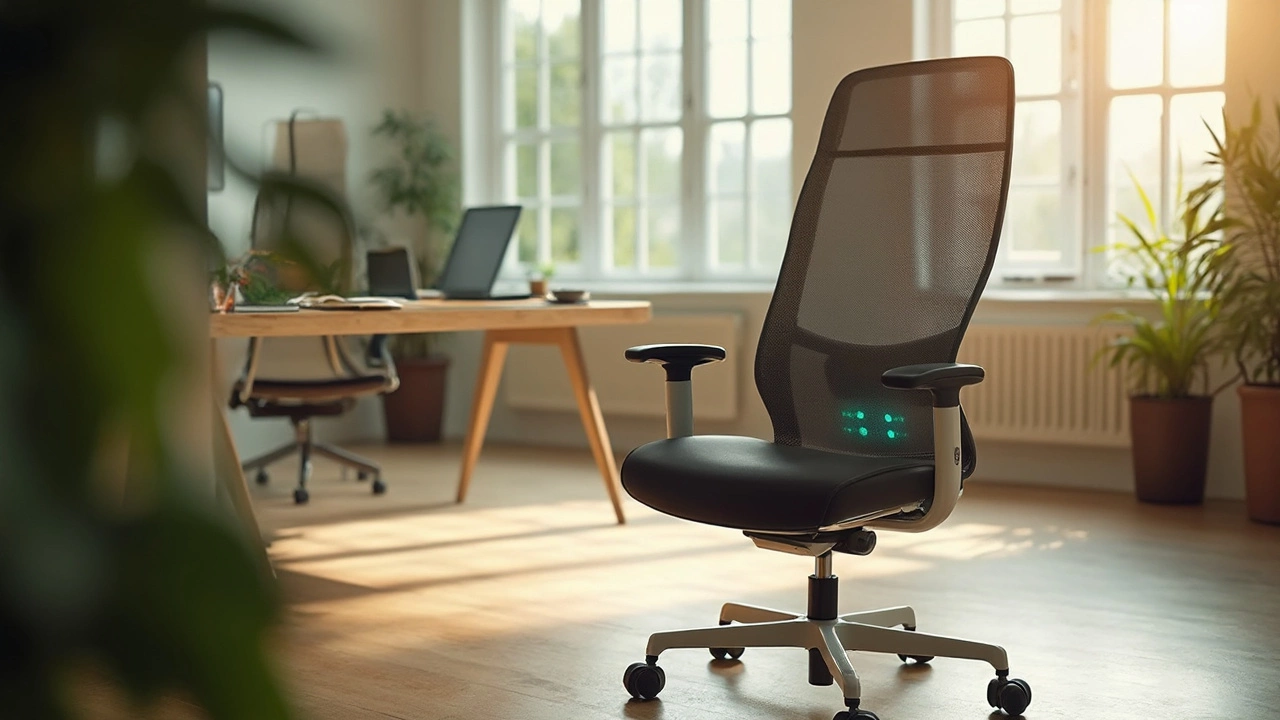Dealing with back pain during long work hours? Discover which chairs chiropractors swear by to ease discomfort and improve posture. This article explores ergonomic designs, adjustability features, and practical tips to help you find the perfect chair for your back health. Dive into insights on lumbar support and seating alignment, all shared with friendly advice. Make your desk setup not just more comfortable but also healthier.
Office Chairs: How to Pick the Right One for Your Desk
Thinking about swapping that old, squeaky seat for something that actually helps you work? You’re not alone. A good office chair does more than look nice – it backs up your spine, boosts focus, and can even save you from a sore neck at the end of the day.
Why ergonomics matters
Ergonomics isn’t a buzzword; it’s the science of staying comfortable while you sit. Look for a chair with adjustable height, lumbar support, and a swivel base. When the seat height matches your elbow level, your shoulders relax and you won’t hunch over the monitor. A curve in the backrest that follows the natural curve of your spine keeps the lower back happy during those marathon meetings.
Don’t forget the armrests. They should let your arms rest at a 90‑degree angle without lifting the shoulders. If your chair lets you tilt the seat forward a little, it encourages a forward‑leaning posture that’s easier on the lower back.
Choosing the right chair for your budget
Office chairs come in three price bands: budget (under £150), mid‑range (£150‑£400), and premium (above £400). A budget chair can work if you prioritize basic adjustments and a breathable mesh back. Mid‑range models usually add better cushioning, more pivot points, and a sturdier base. Premium chairs often feature advanced lumbar systems, high‑quality leather or fabric, and a longer warranty.
Here’s a quick cheat sheet:
- Task chairs – light‑weight, great for short‑term use or hot‑desking.
- Executive chairs – larger, padded, often leather, best for a polished office vibe.
- Mesh chairs – breathable, keep you cool, ideal for warm rooms.
- Sitting‑ball hybrids – add a bit of movement, good for active sitting.
Before you click ‘add to cart’, sit in the chair for at least five minutes. If it feels firm but not hard, and you can easily adjust the seat depth, you’ve likely found a winner.
Lastly, think about durability. A chair with a five‑year warranty and a sturdy five‑star base (usually nylon or steel) will outlast cheap plastic frames. And remember to check the weight capacity – most standard chairs hold up to 120 kg, but heavy‑duty options go higher.
In short, pick a chair that matches your height, supports your lower back, and fits the money you’re willing to spend. When you nail those basics, you’ll notice better posture, fewer aches, and maybe even a boost in productivity. Happy seating!
Over time, many people notice their office chairs start to lose their height-adjustability and become less comfortable. This issue can often be attributed to wear and tear on the chair's pneumatic cylinder. Regular maintenance and proper use can extend the lifespan of office chairs, providing better support and comfort in the long run. Learn how to identify problems early and take actionable steps to prevent your office chair from sinking prematurely.

